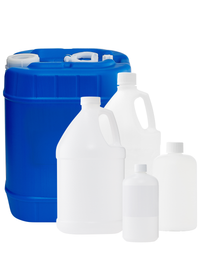Dyes, Stains and Indicators
Dyes, Stains and Indicators
Commonly Used In Microbiological Assays And Histology
Such as much of the scientific innovation in the world, greatness is usually stumbled upon accidentally, that would ultimately lead to a change in the scientific revolution for the years to come. In the mid 1800’s, much of the concerted efforts in chemistry and science were focused around the study of readily oxidative materials with an array of chemical agents. A French Chemist, Francois-Emmanuel Verguin found that the aniline reaction with stannic chloride gave a fuchsia, which later became known as fuchsine dye. This success in exploration became known as the first of the triphenylmethane dye, that ultimately triggered a second phase known as the synthetic dye industry and its wide array of color.

The color of a dye is dependent upon the ability of the substance to absorb light within the visible region of the electromagnetic spectrum (380-750 nm). An earlier theory known as Witt theory stated that a colored dye had two components, a chromophore which imparts color by absorbing light in the visible region (some examples are nitro, azo, quinoid groups) and an auxochrome which serves to deepen the color. This theory has been superseded by modern electronic structure theory which states that the color in dyes is due to excitation of valence π-electrons by visible light. Dyes, stains and indicators commonly and most notably used in the scientific field for a wide array of processes ranging from analytical, to process industry, to biological assay test and product test development. To name a few, titrations, pH calibrations and isoelectric testing involves indicators such as bromophenol blue, methyl orange, phenolpthaliein and starch indication (normally for Iodine testing) which can be utilized in most analytical process testing.

Medical testing labs and research biological institutions utilize methods that allow for the illumination of proteins and conjugates by gram staining dyes. This laboratory practice involves the use of the kit’s components that aides to diagnose the presence of a bacterial infection rapidly by differentiating bacterial via the staining method for positive and negative.
In major application processes, dyes and indicators are used in prominent types such as acid dyes, that can be used for polyamide and protein substrates for nylon, wool and silk. Industrial application also use disperse dyes that bear a hydrophobic substrate such as polyester and acetate to adhere to like-bounded products. The wide variety of uses of the indicators and dyes allow for the key factors on outlining a successful dyeing process.
Lab Alley makes all essential chemicals accessible to our customers nationwide to ensure that our materials are there for you, for any projects and production processes in your company. As companies gear up to begin their production processes, keep in mind the fastest growing e-commerce business for chemicals, that can help support you step-by-step. As the Amazon of chemicals, Lab Alley supports our customers with the best, high end quality chemicals that can be used in raw chemical industrial, and refinery processes, to cosmetic, food and lab grade products that are safe for human consumption. We work to ensure that all essential chemicals that are sold meet your respective grade and are delivered to you with an outstanding delivery time. Here at Lab Alley, we do the research for you, and aim to do our best in servicing each industry through theory and best practices behind the market in which you aim to serve, while offering exemplary customer service while doing business.



























